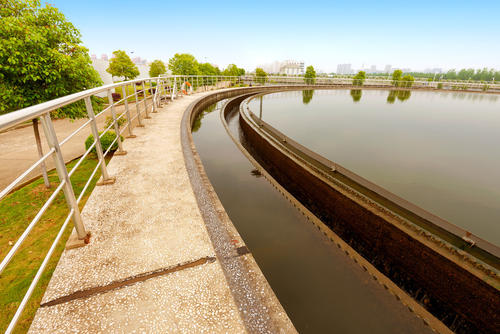Rural sewage mainly consists of domestic sewage and agricultural wastewater. The composition of domestic sewage is relatively fixed, mainly containing organic substances such as carbohydrates, proteins, amino acids, fats, etc. It is more suitable for the growth of bacteria and becomes a place for the survival and reproduction of bacteria and viruses; However, domestic sewage generally does not contain toxicity and has a certain fertilizer effect, which can be used to irrigate farmland. The components of agricultural wastewater are diverse, and different seasons, places, and development goals require different treatment methods for their wastewater. When treating sewage, in order to reduce the amount and complexity of sewage discharge, it is necessary to combine the construction of biogas digesters that the country is vigorously promoting, and separate the flushing water (black water) and other domestic water (gray water) in the domestic water. Grey water is treated by natural purification systems, while black water and human and animal manure are treated by anaerobic digesters. This not only reduces the discharge, complexity, and treatment costs of wastewater, but also has important significance for developing clean new energy in rural areas, protecting the living environment, and promoting sustainable development of rural economy and society.

The function of a sewage treatment station is to treat production and domestic sewage, meet the prescribed discharge standards, and is an important facility for protecting the environment. Wastewater treatment stations are already common in industrialized countries, while in China, there are very few sewage treatment stations in villages and towns, but they will gradually increase in the future. To make these sewage treatment plants truly effective, strict discharge systems, organizational and management systems are also needed to ensure their effectiveness.
Villages with conditions should build sewage treatment stations in conjunction or individually. And it should comply with the following regulations:
① When separating rainwater and sewage, the sewage is transported to the sewage treatment station for treatment;
② When rainwater and sewage merge, the merged sewage is transported to the sewage treatment station for treatment; In front of the sewage treatment plant, it is advisable to set up a interception well to discharge the combined sewage during the rainy season;
③ The sewage treatment station can adopt biochemical treatment technologies such as artificial wetlands, biological filters, or stable ponds, or other treatment technologies with engineering examples or mature experience can be adopted according to local conditions.

Artificial wetlands are suitable for treating pure domestic sewage or combined rainwater and sewage. They occupy a large area and are suitable for secondary series connection; The planar shape of the biofilter should be circular or rectangular. The filling material should be strong, corrosion-resistant, high-strength, with a large specific surface area and high porosity. It is recommended to use inorganic filter materials such as crushed stones, pebbles, slag, coke, etc; When the geographical environment is suitable and technical conditions permit, stable pond treatment systems such as wasteland, abandoned land, pits, and depressions can be considered for village sewage treatment. The stable pond system used for secondary treatment should not have a treatment scale greater than 5000m3/d.
The site selection of the station should be arranged below the dominant summer wind direction, downstream of the village and town water bodies, at a lower terrain, to facilitate the collection of sewage into the sewage treatment station, without polluting the water used in the village and town, and to facilitate downstream discharge after treatment. It has a protective distance from the residential areas of villages and towns to reduce pollution to the residential areas. If sewage is considered for agricultural irrigation and sludge fertilization, the site selection should be close to the agricultural irrigation area for easy transportation. There are many methods for sewage treatment and utilization, and the selection of solutions should consider the following factors:
① Requirements for the degree of sewage treatment in environmental protection;
② The quantity and quality of sewage;
③ Investment capability. Wastewater treatment technology is the use of various methods to separate the pollutants contained in wastewater or convert them into harmless substances, thereby purifying the wastewater.

Address:No.3 North Haohua East Road, Industrial Park, Neiqiu County, Xingtai City, Hebei Province
Website:www.longkehg.com